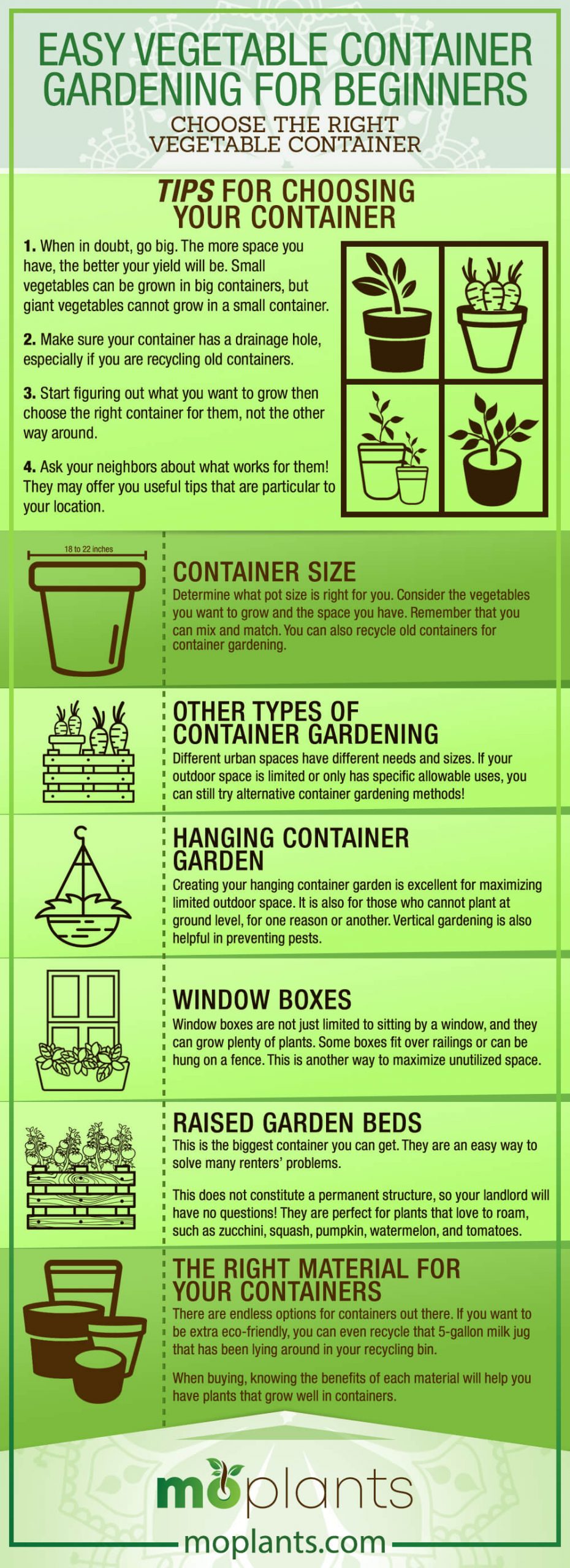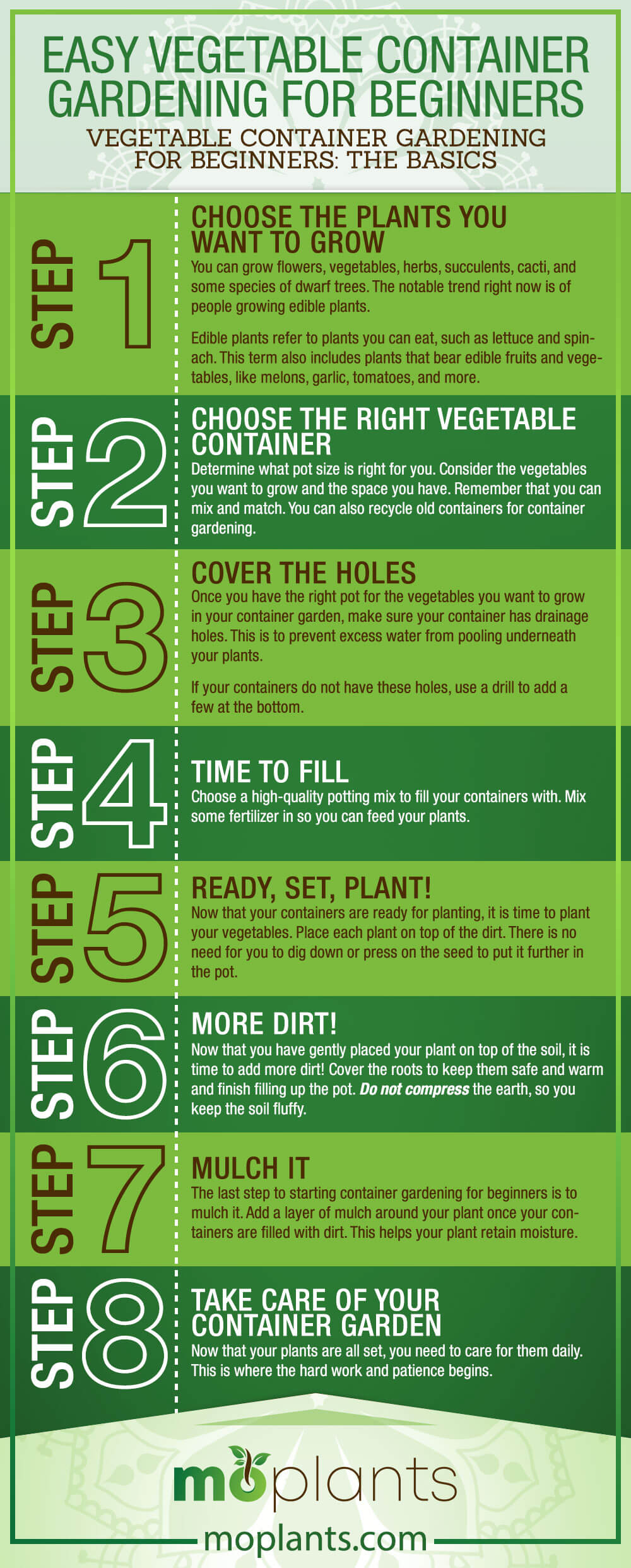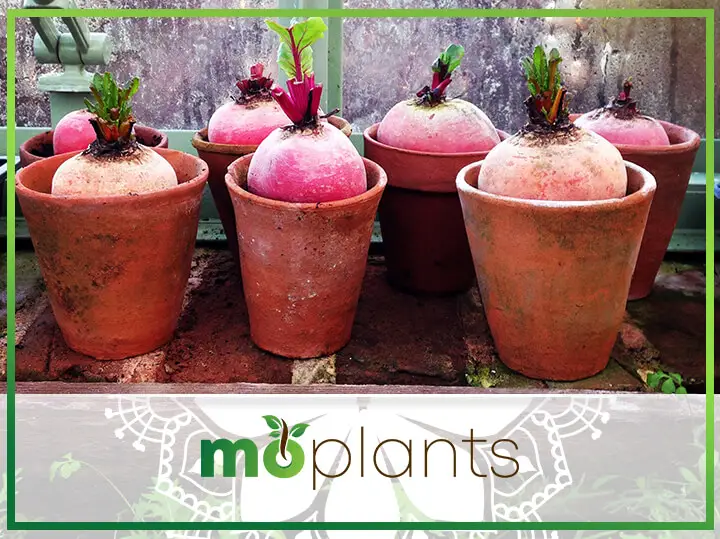Many live in the city, where having a backyard for your garden is a luxury. So what is someone with a green thumb to do? Let us show you the basics of how to build your very own concrete jungle!
What is Container Gardening?
Container gardening is the use of pots, planters, tubs, half barrels, or any other container that can hold potting soil and a plant to grow your plants. It involves growing vegetables in anything except a traditional plot in the ground.
This makes it great for beginners because you can start with something as simple as one plant or several. It is also excellent for places with minimal outdoor space, as you can plant as much as your outdoor area can take.
Vegetable Container Gardening for Beginners: The Basics
Step #1: Choose the Plants You Want to Grow
What Can You Grow in a Vegetable Container?
You can grow flowers, vegetables, herbs, succulents, cacti, and some species of dwarf trees. The notable trend right now is of people growing edible plants.
Edible plants refer to plants you can eat, such as lettuce and spinach. This term also includes plants that bear edible fruits and vegetables, like melons, garlic, tomatoes, and more.
But how do you choose the right vegetables for you?
Consider the Size of Your Container
All you need to remember when figuring out what you can grow in your container garden is:
- The mature size of the vegetable you want to grow to allocate space as it grows
- The container you will raise it in
This is because the root system of your growing vegetables needs adequate space to spread.
Consider Where You Will Place Your Container Garden
Plants need proper growing conditions to stay healthy and produce the fruits or leaves you want. Choose plants that are appropriate for your space, weather, and region.
Consider the average temperature in your area, as well as wind strength, the likelihood of storms and other inclement weather, the amount of sunlight your site receives typically, and the accessibility of water.
Remember that most plants require an average of 6 to 8 hours of sunlight to stay healthy!
Consider Your Lifestyle and Skill Level
Certain plants require more time and effort than others.
For example, succulents are known to be very hardy. They barely need watering and can mostly be left alone. This is good for someone who is only starting with plants and wants something easy to care for.
Other types of plants require daily watering, fertilizing, and other forms of care.
Remember that growing your vegetable garden requires time, effort, and commitment. These plants need regular maintenance, so make sure to consider how much you can devote to your growing vegetables.
Step #2: Choose the Right Vegetable Container
Tips for Choosing Your Container
- When in doubt, go big. The more space you have, the better your yield will be. Small vegetables can be grown in big containers, but giant vegetables cannot grow in a small container.
- Make sure your container has a drainage hole, especially if you are recycling old containers.
- Start figuring out what you want to grow then choose the right container for them, not the other way around.
- Ask your neighbors about what works for them! They may offer you useful tips that are particular to your location.
Container Size
Determine what pot size is right for you. Consider the vegetables you want to grow and the space you have. Remember that you can mix and match. You can also recycle old containers for container gardening.
Big Vegetable Container: 18 to 22 inches
A large container is excellent for single plants that require a lot of root space, cages, or a trellis.
Big pots can be used to grow tomatoes, vine cucumbers, pole beans, string peas, and tomatillos, among others.
They are also great for planting multiple varieties of smaller vegetables that do not need the entire pot to grow. Often, you can produce 2 to 3 medium-sized plants and 4 to 67 small plants in one large container.
Medium Vegetable Container: 10 to 18 inches
The great thing about medium container gardening is that it is excellent for beginners. They are less cumbersome than big containers and are best for compact plants or those of the bush variety.
Some of the best plants for a medium container are peppers, bush beans, lettuces, bush cucumbers, spinach, broccoli, carrots, beets, cabbage, celery, peas, eggplant, and chard.
Small Vegetable Container: 6 to 10 inches
Small containers do not offer a lof growing room, so planting the wrong kind of vegetables in them can stunt your plant’s growth.
However, growing vegetables in containers of this size are still possible for some vegetables that do not require much space, as well as certain herbs.
We recommend arugula, spinach, lettuces, cabbage, radishes, carrots, and green onions.
Other Types of Container Gardening
Different urban spaces have different needs and sizes. If your outdoor space is limited or only has specific allowable uses, you can still try alternative container gardening methods!
Hanging Container Garden
Creating your hanging container garden is excellent for maximizing limited outdoor space. It is also for those who cannot plant at ground level, for one reason or another. Vertical gardening is also helpful in preventing pests.
Some plants actually grow better when they are not grown on the ground. You can diversify your container garden by having both vertical and ground-level containers.
Some of the best plants for hanging container gardening are strawberries, herbs, lettuce, and spinach!
Window Boxes
Window boxes are not just limited to sitting by a window, and they can grow plenty of plants. Some boxes fit over railings or can be hung on a fence. This is another way to maximize unutilized space.
The best kind of plants for window boxes are those that keep to themselves, do not need a lot of root space, and/or do not grow up to be big.
We recommend beets, green beans, green onions, celery, herbs, strawberries, and radishes for this type of container.
Raised Garden Beds
This is the biggest container you can get. They are an easy way to solve many renters’ problems.
This does not constitute a permanent structure, so your landlord will have no questions! They are perfect for plants that love to roam, such as zucchini, squash, pumpkin, watermelon, and tomatoes.
The Right Material for your Containers
There are endless options for containers out there. If you want to be extra eco-friendly, you can even recycle that 5-gallon milk jug that has been lying around in your recycling bin.
When buying, knowing the benefits of each material will help you have plants that grow well in containers.
Terracotta
Terracotta pots are one of the most common pots for growing vegetables in containers. The good thing is they come in many sizes and are pretty durable.
However, high-quality terracotta can be very expensive, especially if you choose large sizes. They are also very heavy, making them difficult to carry around when you are setting up. Worse, they are breakable.
Ceramic
Ceramic pots are made of glazed ceramic. They are usually cheaper than terracotta but are still quite pricey.
The benefit is they are durable and come in a variety of beautiful colors. However, they can also be heavy and difficult to move around.
Plastic
For beginners on a budget, plastic is an excellent choice for growing vegetables in containers. Not only are they cheap, but they are also extremely durable and light, so moving them around will be no trouble at all.
Wood
Wooden containers are classy and gorgeous. They add a certain look to your garden without needing much effort.
However, they can be difficult to move after they have been left sitting in the same location for a while. Moreover, once their protective coating starts degrading over time, they can be susceptible to water and the elements.
Concrete
If you want a durable planter, consider concrete containers. They are durable and will last you fora long time.
However, they are cumbersome so you cannot move them around that much. Once you buy them and set them up, they will pretty much have to stay there.
Metal
Some metal containers are available. They look great and come in a variety of designs. However, they are not the best option because they will absorb and conduct heat.
If you want to use a metal container, line it with plastic to protect the roots of your plants.
Infographic

Step #3: Cover the holes
Once you have the right pot for the vegetables you want to grow in your container garden, make sure your container has drainage holes. This is to prevent excess water from pooling underneath your plants.
If your containers do not have these holes, use a drill to add a few at the bottom.
Cover the drainage holes with wire mesh or a coffee filter, so that excess water drains out while soil stays in your containers.
Remember to not put any gravel, bottles, or cans on the bottom of your container because this will affect how your containers will drain.
Step #4: Time to Fill
Choose a high-quality potting mix to fill your containers with. Mix some fertilizer in so you can feed your plants.
How to Choose the Right Dirt
Remember that your dirt has to be light and fluffy. Do not pack them tightly; otherwise, the roots will not have enough access to oxygen, and water will not drain well.
For beginners, organic potting mixes are a good option. This makes taking care of your plants just a little bit easier.
Keep it Fluffy
Check to ensure that the dirt is rich and fluffy. A good trick to remember is that the fluffier the soul, the more air in it. The more aerated the earth is, the better the soil drains.
Break up any crumbles and boulders in the dirt while you fill your pot.
Do Not Overfill
Remember to leave space for your plant to grow. So only fill up your containers halfway or 3-quarters full.
Step #5: Ready, Set, Plant!
Now that your containers are ready for planting, it is time to plant your vegetables. Place each plant on top of the dirt. There is no need for you to dig down or press on the seed to put it further in the pot.
Didn’t think gardening for beginners was that simple, did you?
Step #6: More Dirt!
Now that you have gently placed your plant on top of the soil, it is time to add more dirt! Cover the roots to keep them safe and warm and finish filling up the pot. Do not compress the earth, so you keep the soil fluffy.
Step #7: Mulch It
The last step to starting container gardening for beginners is to mulch it. Add a layer of mulch around your plant once your containers are filled with dirt. This helps your plant retain moisture.
Step #8: Take Care of Your Container Garden
Now that your plants are all set, you need to care for them daily. This is where the hard work and patience begins.
Water Them Everyday
Unlike traditional gardens that are actually in the soil, container gardens do not hold as much moisture. This is why you need to check your plants every day and water them as needed.
The amount of water each plant will need will depend on the type of plant you are gardening. Remember to do your research for this because plants can die from being over-watered.
If you want, you can choose to add a self-watering bulb or a drip irrigation system to do the watering for you. There are also options for self-watering pots on the market.
Fertilize as Frequently as Needed
The initial fertilizer you placed when planting your container garden is enough to tide your plants over.
However, observe, and pay close attention to your plants’ needs. Add fertilizer as frequently as required to keep them healthy and well-fed.
Keep the Soil Aerated
We have mentioned that aeration is critical to draining excess water and ensuring your plants get enough oxygen. Whenever you add compost or water to your plants, make sure not to press down.
Add a Trellis
If you are growing a vegetable that needs to sprawl out or has heavy fruits, consider adding a trellis to your containers.
This not only keeps your plants contained, but also gives them added support and promotes overall plant health and production.
Infographic

Conclusion
Now that you know all the basics of gardening for beginners, container gardening should be a breeze! Did you like the tips in this article? Do you think it is a great help to you? Let us know in the comments and share this article!

